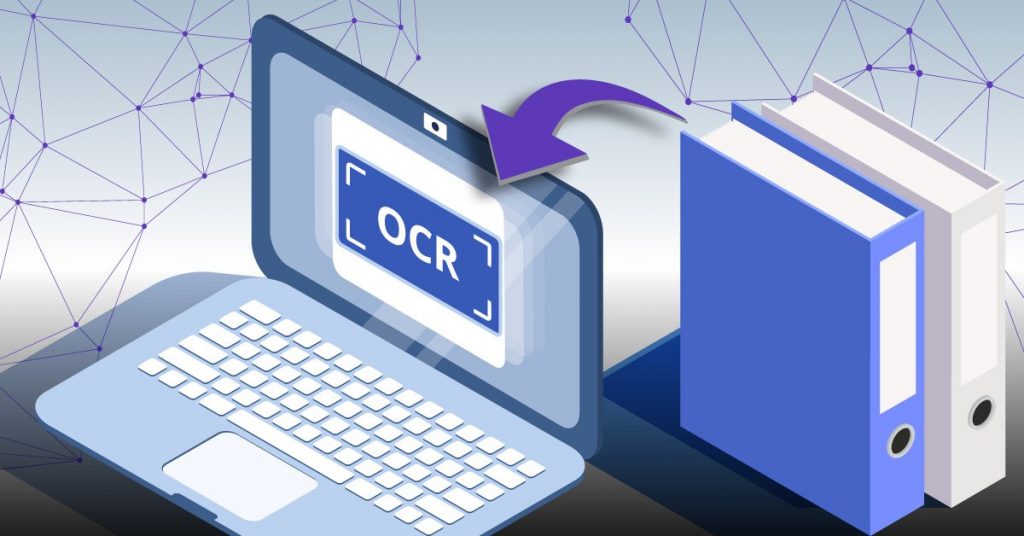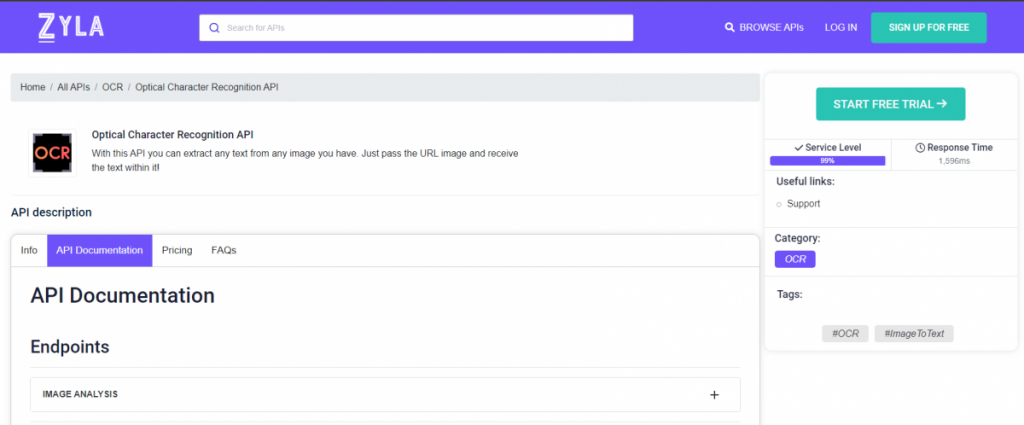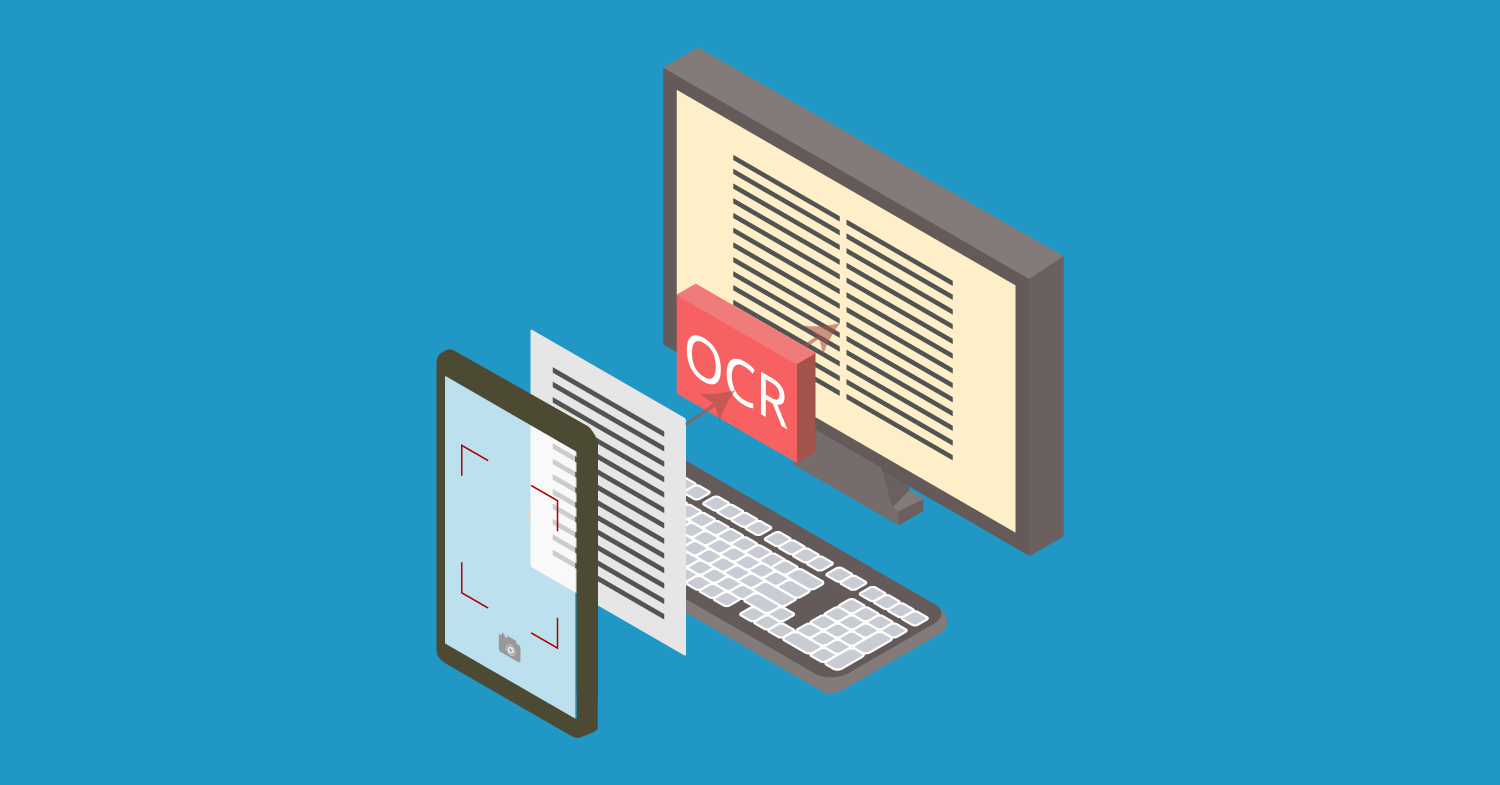In an era driven by digital content and visual communication, extracting valuable information from images has become a necessity for businesses across various industries. The advent of image-to-text API technology has revolutionized the way images are understood, analyzed, and utilized.
APIs have in the past few years opened up a world of possibilities for businesses looking to leverage image content in new and innovative ways. From brand protection to automated categorization and document digitization, APIs have become very important. As we continue to rely on visuals in our digital landscape, image-to-text APIs are poised to play a pivotal role in transforming images into valuable sources of textual information.
This is why we recommend the use of Optical Character Recognition API, a very solid API capable of tackling plenty of use cases in the business.
Brand Protection and Image Monitoring
For companies, safeguarding their brand identity is paramount. The manual endpoint of Optical Character Recognition API allows users to upload images directly to the system. This feature is invaluable for organizations seeking to monitor unauthorized use of their brand assets across the internet. By extracting text from images, the API assists in flagging instances where the company’s name, logo, or trademarks might be present without authorization. This proactive approach enables swift action against counterfeit products, unauthorized promotions, and potential brand dilution.

Image Categorization and Content Tagging
In the digital age, content organization is key to efficient retrieval and utilization. Optical Character Recognition API‘s URL endpoint is particularly useful for businesses that possess a vast repository of images. By simply providing an image URL, the API performs character recognition and extracts text, enabling automated content tagging. This aids in categorizing images for easy retrieval, minimizing manual effort, and maximizing the efficiency of content management systems. The extracted text can also serve as metadata, enhancing the searchability and organization of visual assets.
Enhancing User Experience through Image Analysis
E-commerce platforms, travel websites, and real estate portals often rely on images to showcase their offerings. Optical Character Recognition API adds a layer of intelligence to these platforms. This is achieved by enabling the extraction of relevant information from images. Consider a real estate website: users can upload images of properties. Then, image-to-text API can automatically pull out details like property descriptions, addresses, and amenities. This simplifies the user experience. This is because potential buyers can quickly access pertinent information without having to sift through lengthy textual descriptions.
Data Extraction from Documents
Beyond images, Optical Character Recognition API can also handle scanned documents, invoices, receipts, and handwritten notes. This has profound implications for industries like finance and healthcare. In the financial sector, for instance, the API can extract information from invoices and receipts, automating expense tracking and accounting processes. In healthcare, handwritten prescriptions and medical notes can be digitized and integrated into electronic health record systems.
How Does This API Work?
Optical Character Recognition API has two main ways of function, On one hand, there’s “Image analysis with file” where the user uploads a file directly to it. the second one, of equal importance, works by providing the API with an image’s URL, this one is labeled “Image analysis”. To provide an example of this API in action, here’s an example of the first endpoint in action, along with the image in question that was uploaded to it:

{
"results": [
{
"status": {
"code": "ok",
"message": "Success"
},
"name": "https://gopostr.s3.amazonaws.com/binary_file_test_1679/0332imjOkeCIYxWlP2FBMLGn0aHUzLfbxlIo5BHc.jpg",
"md5": "c4289b1b4ad1d0640b7c13e65d303b39",
"width": 736,
"height": 736,
"entities": [
{
"kind": "objects",
"name": "text",
"objects": [
{
"box": [
0.10190217391304347,
0.029891304347826088,
0.8573369565217391,
0.970108695652174
],
"entities": [
{
"kind": "text",
"name": "text",
"text": "PERMIAN\nPARK\nWhere is\neverybody?\nI don't get it.\nI mean, look at this guy!\nHe's big and scary!\n@DanbyDraws\nWe're just as good as the\nother place. Just because they're\ntechnically not \"dinosaurs\" doesn't\nmake this place inferior!\nOh God! One of them escaped,\nand it's eating the lawyer!\nSee! We're\nthe same!\nDANBY DRAWS.COM(ICS)"
}
]
}
]
}
]
}
]
}How Can I Get This API?
Optical Character Recognition API presents a versatile solution for businesses looking to tap into the potential of their image assets. With its dual endpoints – manual image upload and URL-based extraction – the API caters to a wide range of use cases. From brand protection and content categorization to enhancing user experiences and extracting data from documents, its capabilities are far-reaching.
As technology continues to evolve, this API stands as a testament to the transformational power of OCR in reshaping how images are understood, interpreted, and harnessed for business growth. You can start using the capabilities of this image-to-text API by following the instructions provided below:

1- Go to www.zylalabs.com and search for “Optical Character Recognition API“, then click on the “Start Free Trial” button to start using the API.
2- Register and choose the plan that suits you best, you can cancel it whenever you want, even at the end of the free trial.
3- Once you find the endpoint you need, make the API call by clicking the “run” button and you will see the results on your screen. You can also choose the programming language.

